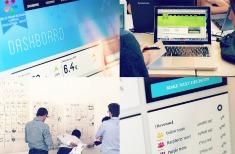
What is the Human Capital Challenge?
The Human Capital Challenge is a simulation game that quantifies the contribution of human capital, and combines it with traditional factors in an all-encompassing strategy simulation. The solution was launched last month after three years of development by HEC Paris Professor Charles-Henri Besseyre des Horts, his team of academics, HR professionals from international companies and MEGA Learning design and development experts. It was specifically designed for current and future managers as well as HR professionals. HEC Paris will integrate the business game into selected degree programs and relevant custom programs which are designed and delivered to individual companies.
For professional service providers especially, human resources are a major investment and represent their key asset – this is why strategic HR decisions carry a significant weight in determining the profitability of a company. The Human Capital Challenge therefore places human capital at the centre of value creation. By doing so, it provides a profound understanding of the co-dependency and interaction between business and HR decisions.
So how does it work?
The simulation is integrated into a training program of a minimum of 2.5 days run by HEC Paris multidisciplinary faculty - it can also be run online. It is delivered in conjunction with workshops, presentations by professors and specialists, and debriefing sessions. You can contact Ann Gilmore to find out more.
During the simulation, 3 to 50 teams of 4-6 participants compete with each other and manage a company in a virtual market place. Teams have to make a series of decisions and determine the success of their chosen strategy by using key performance indicators. They can thereby easily identify which human capital decisions are more effective than others. The focus is on human capital objectives, such as developing team dynamics, attracting and retaining the best people by making the company more attractive, and optimizing the performance and skills of the workforce through career development and training programs.
In this way, the challenge demonstrates how significant and sustainable investment in human capital is directly connected to tangible business results, and how the right balance between value, productivity and cost can be found. This is done by logically linking strategic opportunities, financial performance and customer sensitivities with human capital.



